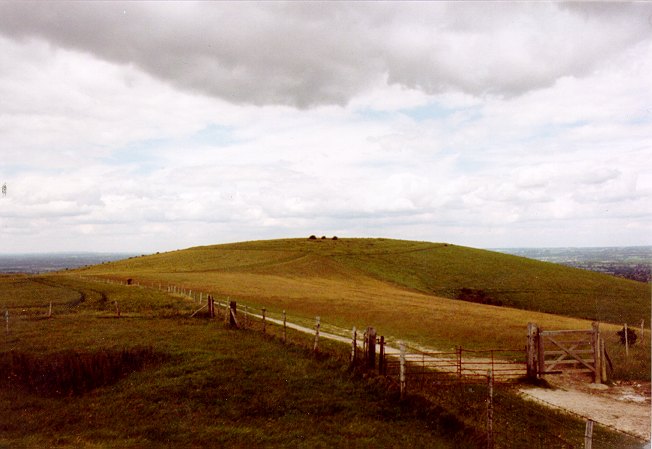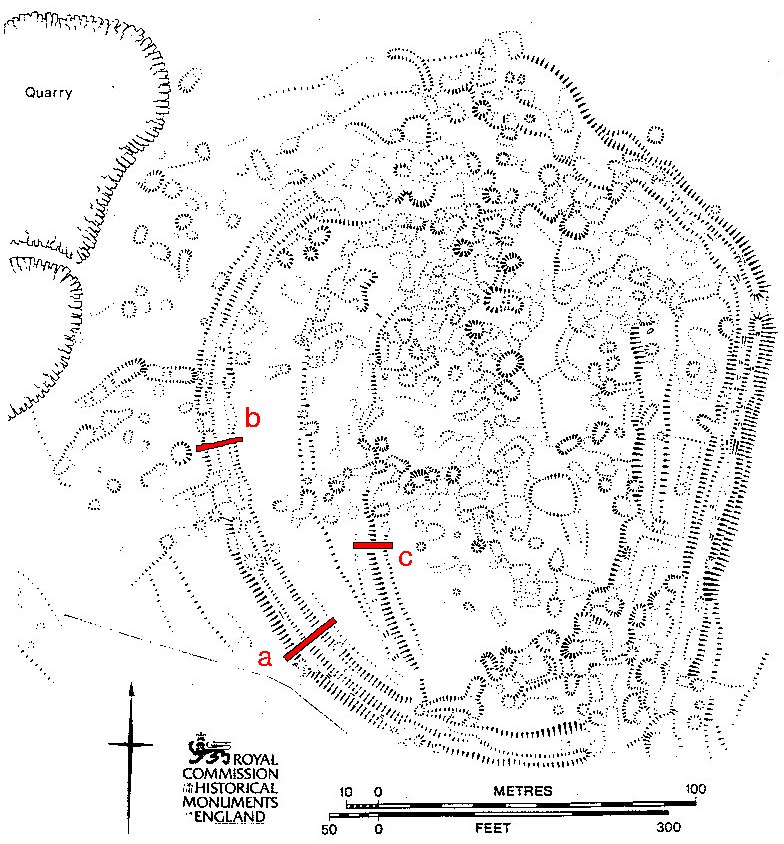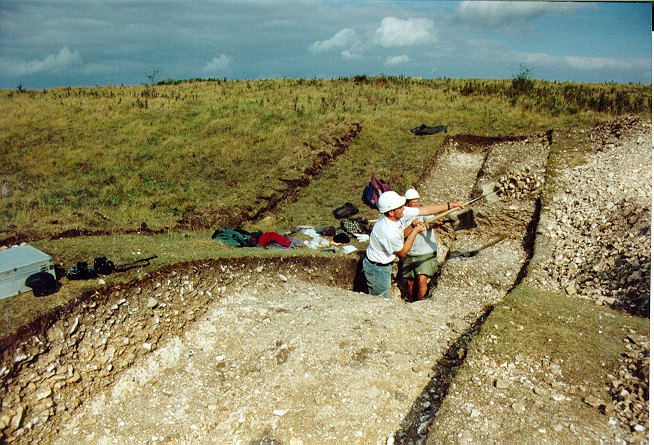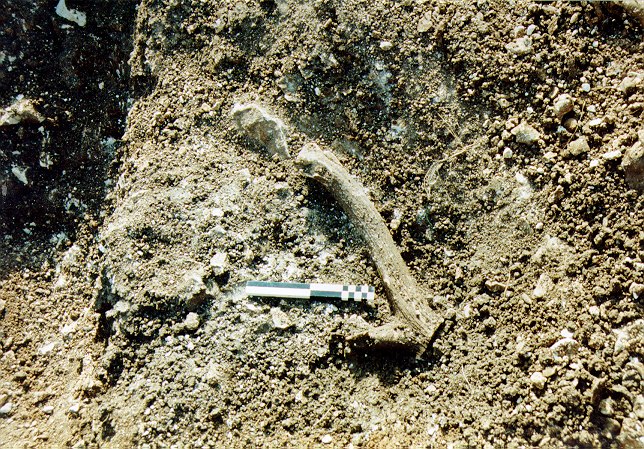
The aims of the 1995 excavations were to establish, as far as is possible, the original extent and form taken by the three recorded enclosures as well as defining a stratigraphic, environmental and chronological sequence for all phases of activity.
It was also felt important
to establish whether the Wolstonbury sites could be considered as being
Neolithic, with enclosure C being regarded as a henge (to be added to the
increasing list of non-utilitarian sites of this date recorded from Sussex),
or whether they should be seen as agricultural settlement enclosures or
stock corrals of the Later Bronze or Iron Ages.

 |
Trenches A and B were cut across the bank and ditch of enclosure C, while trench C sampled enclosure A. Each of the three trenches at Wolstonbury were excavated by hand, with turf and topsoil being kept separate from other excavated soils so that complete reinstatement was possible. |
All pottery and faunal remains data resulting from the archaeological investigations at Wolstonbury is currently being processed within the School of Conservation Sciences at Bournemouth University. The flintwork is being studied by Chris Butler of the Mid Sussex Archaeological Field Team, while the environmental data is at present being processed by Dr Mike Allen of Wessex Archaeology.
Enclosures A and B
Trench C produced no conclusive evidence of the existence of a defined inner enclosure. "Enclosure A", as exposed, has the appearance of an eroded field lynchet. The presence of a series of low banks, apparently running from the eastern margins of, and at right angles to, "enclosure A" may reinforce such an interpretation. Additional field banks would appear to be indicated by the line of "enclosure B" and by the apparently parallel low banks of the 'Celtic' field system recorded across the western slopes of Wolstonbury Hill during the 1994 RCHME survey.
Enclosure C
A radiocarbon determination of
2730 + 80 BP (cal BC 1030 to 790: Beta-94959) was obtained from bone retrieved
from the primary silt of enclosure C (trench B).
Radiocarbon dates of 2440 + 60 BP (cal BC 785 - 390: Beta-94957) and 2410
+ 80 BP (cal BC 790 - 365: Beta-94958) were retrieved from secondary
ditch fills within trench A.
 |
Preliminary analysis of the flint and pottery assemblages retrieved from primary contexts within the ditch, and beneath the external bank, of enclosure C, has not produced anything that would be out of place within a Late Neolithic or Bronze Age context. |
Land snail assemblages are both unexpected, and show distinct changes in the local landuse. The assemblages are not typical of the environment we would expect in the Iron Age and this evidence questions either our preconceptions of the Iron Age environment, or the ascription of the Iron Age date to the enclosure as a whole. The tentative evidence of scrubland succeeding woodland clearance suggests either late clearance of primary woodland in this area, indicating that Wolstonbury Hill was not intensively used prior to the construction of the enclosure, or that this enclosure may be of middle to later Neolithic origin.
The large assemblage of Later Bronze Age/Early Iron Age pottery and faunal remains recovered from secondary units of soil accumulation within the ditch of enclosure C constitutes a deposit of secondary refuse. This may suggest the presence of Later Bronze Age/Early Iron Age occupation within the area enclosed by the main earthworks.
Conclusions
Prior to the full results of the artifactual and environmental data analysis, the preliminary data recorded from Trenches A and B would appear to indicate that Wolstonbury C is neither a Neolithic henge, nor an Iron Age hillfort, but an enclosure of Later Bronze Age origin. The presence of such a site, at the northern margins of the chalk downs, would appear to add further emphasis to the rich assemblages of Later Bronze Age metalwork and settlement data recorded from the Brighton area.